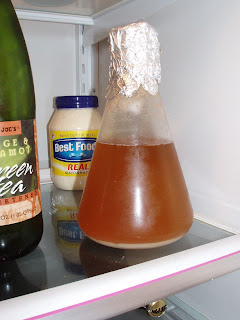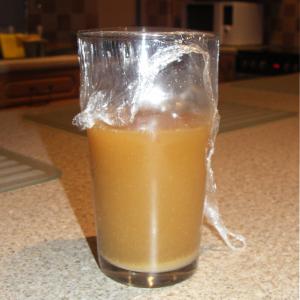Jtc2811
Well-Known Member
So after reading about a dozen posts on this forum on the various experiences people have had harvesting Pacman yeast from a bomber of Rogue, I decided to try my hand at it. I followed all the directions in the video that's been floating around here, making a sanitized vessel, allowing an inch of dregs from the bottle to warm to room temp, etc. I tossed the sediment from two bottles into some extra light wort, and... nothing. After 3 days there was a millimeter thick line of dark brown sediment on the bottom of the vessel.
A couple weeks later, I tried again, this time starting really small and stepping up. I used a 1:1 malta goya:water solution (sterilized) and went from 200 ml to 400 to 800 after about 30 hours each time. What I am seeing now is once again that same very dark sediment. There is more sediment each time I step up, but I am not sure if that is from the malta goya or if it is the yeast multiplying. It doesn't cake or hang together, it just sits at the bottom of the vessel.
There is no discernible activity in the vessel; no bubbles, carbonation, etc. There is a thick foam that forms when I shake to aerate, but I don't think it's krausen.
So, what am I doing wrong? Why can't I harvest some Pacman? What can I do that's a tried and true method?
For the record, the beers I used were: Brutal Bitter, Choc Stout, Mocha Porter, Brutal IPA.
A couple weeks later, I tried again, this time starting really small and stepping up. I used a 1:1 malta goya:water solution (sterilized) and went from 200 ml to 400 to 800 after about 30 hours each time. What I am seeing now is once again that same very dark sediment. There is more sediment each time I step up, but I am not sure if that is from the malta goya or if it is the yeast multiplying. It doesn't cake or hang together, it just sits at the bottom of the vessel.
There is no discernible activity in the vessel; no bubbles, carbonation, etc. There is a thick foam that forms when I shake to aerate, but I don't think it's krausen.
So, what am I doing wrong? Why can't I harvest some Pacman? What can I do that's a tried and true method?
For the record, the beers I used were: Brutal Bitter, Choc Stout, Mocha Porter, Brutal IPA.




